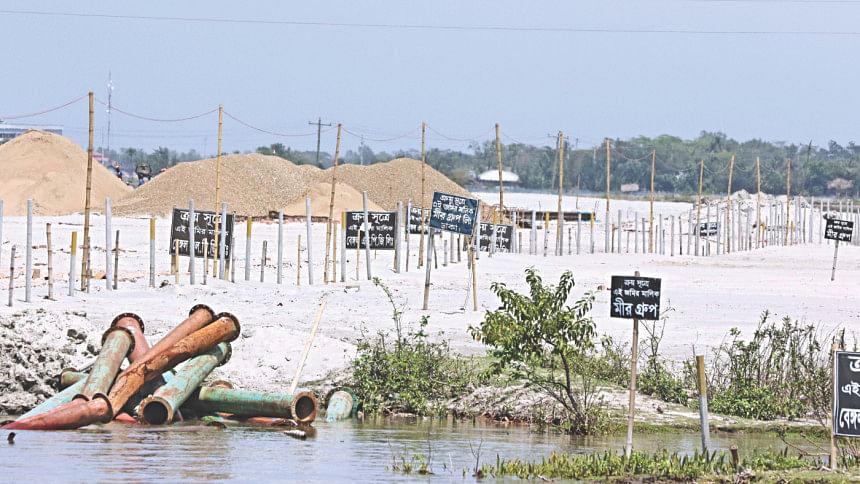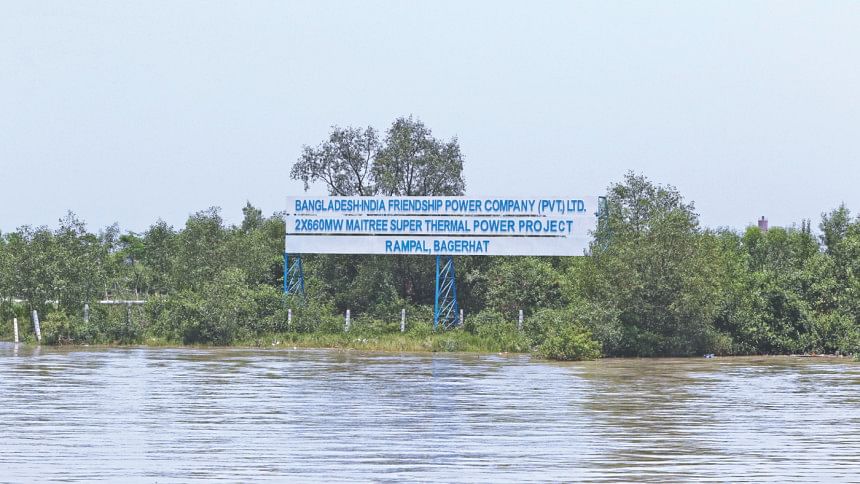Can our mangroves survive the impulse to industrialise?

On August 24, 2017, the High Court directed the Bangladesh government not to approve any industry activity within 10 kilometres of the Sundarbans area. The directive was based on a gazette notification published on August 30, 1999, by the then-Ministry of Environment and Forest, which declared the 10-kilometre area surrounding the Sundarbans an ecologically critical area (ECA).
Two years later, on August 27, 2019, the High Court went back on their decision, giving permission to establish LPG bottling factories within the ECA. Three organisations—TMSS, Baraka Limited and Delta LPG Limited—were not given environmental clearance certificates by the Department of Environment (DOE) when they wanted to establish LPG bottling factories within five kilometres of the forest. Challenging the DOE’s decision, these three companies appealed to the High Court, who ultimately gave them the go-ahead.
However, with the verdict, the court also stated that it is the government who will decide the number of factories allowed in the ECA. Dubbing the Sundarbans the “lung of Bangladesh” and highlighting the importance of its conservation, the court further stated that this verdict would not be an impediment if the government wants to stop building factories near the forest in the future.
Unfortunately, the government seems to have no such intention. Very recently, the government allowed five cement factories to be built within six kilometres of the Sundarbans. The cement industry, to be clear, is one of the largest producers of greenhouse gases and concrete dust that severely pollutes air, water and topsoil of nearby areas.
In fact, according to a list prepared by the DOE in April 2018, 190 factories and commercial establishments have been built within the 10-kilometre buffer zone of the forest—with 24 of these factories having been included in the “red list”, which means they have been severely polluting the environment. Of the remaining factories, 103 have been marked “Orange A” and 63 of them have been marked “Orange B”, which mean that they have also been threatening the forest ecosystem by emitting pollutants. These factories include oil refineries, cement factories, ship breaking and building yards, salt refineries, LPG bottling plants and brick fields.

On several occasions, DOE and the environment minister argued that none of these factories are located within the first five kilometres of the buffer zone. “Most of these factories are located at the Mongla industrial area, in different places of Bagerhat. And not all factories are harmful for the forest. For instance, LPG bottling factories have been marked as a “green industry”, said Md Shahabuddin, Minister for Forest, Environment and Climate Change, in reply to a question asked in parliament on June 29, 2019. Interestingly, LPG processing and bottling plants were included in the red list of industries until recently because any leak in the gas cylinders or processing plant can cause severe air or water pollution and slight ignition of the leaked gases can cause explosions and wildfire.
Despite these risks, the government changed the status of LPG bottling plants to a green industry. This move was even criticised by the High Court bench which gave the permission to the above-mentioned LPG bottling factories. The court stated as an observation on the verdict, “It is shocking that the government changed its position by allowing LPG plants by declaring them as green category industry, which was earlier in the red category of industry to favour some people.”
Meanwhile, construction work of the 1,320 megawatt coal-fired Rampal Power Plant is in full swing despite repeated appeals from environmental activists in the country and abroad. The government has also rejected former UN Special Rapporteur on Human Rights and the Environment John H Knox’s appeal to stop such construction. On July 31, 2018, Knox said in a statement, “The Sundarbans mangrove forest, the habitat of Bengal tigers, is threatened by heedless industrialisation, which must be halted by Bangladesh. Despite objections from UNESCO’s World Heritage Committee (WHC) and the International Union for the Conservation of Nature (IUCN), Bangladesh has approved more than 320 industrial projects in the area, including the massive Rampal coal-fired power plant, bypassing requirements for public participation and environmental impact assessment.”

The Bangladesh government’s indifference to these appeals almost resulted in the loss of the Sundarbans’ World Heritage Site status. In June this year, UNESCO expressed its dissatisfaction about the Bangladesh government’s role in saving the Sundarbans and labelled it as a “World Heritage Site in danger”. According to UNESCO, the Bangladesh government did not take enough measures to conduct the strategic environmental assessment (SEA) in southwest parts of Bangladesh and, instead, installed two more power plants on the Pyra river and numerous industries on the periphery of the Sundarbans. Ultimately, the decision was postponed until next year, and the government pledged to enact the following three measures: expedite the work of the SEA, formulate the National Oil Spill and Chemical Contingency Plan, and invite the reactive monitoring mission from the IUCN and WHC to monitor the progress. However, the works for the SEA is still in the procurement phase and the contingency plan has not been formulated yet.
Nevertheless, the Bangladesh-India Friendship Power Company Limited hopes that the power plant will also start operations by February 2021. The Bangladesh government’s turning a blind eye to all the appeals to save the Sundarbans has already had a fatal impact on the precarious mangrove ecosystem. In 2015, a tiger census revealed that only 106 tigers were living in the Bangladeshi part of the Sundarbans whereas in 2004 the number was 440. At present, the number of tigers in the Sundarbans is only 114, according to the last tiger census of 2018. In the fragmented and shrinking forest, tigers often invade human villages and are killed by frightened villagers, further reducing their population.
Md Bashirul Al Mamun, divisional forest officer of the West Sundarbans Zone, Khulna, explained this situation to Star Weekend. “When a tiger leaves its mother, it has to establish new territory. But the Pashur River and its channels are so frequently navigated by cargo vessels and the forests are so fragmented by industrialisation that tigers don’t dare cross. This creates food shortages and territorial crises for tigers. As a result, they are forced to use villages for their movement and humans and cattle become their prey,” he said.
Tigers act as forest guards, prevent human encroachment, and keep the herbivore population in check. It is essential to increase the tiger population to conserve the forest, he adds. Various other types of wildlife, not just tigers, are dependent on the mangrove ecosystem, and are also becoming extinct due to rapid, unplanned industrialisation. A census conducted in 2019 revealed that only 198 Irrawaddy dolphins are left in the waters of the Sundarbans, whereas in 2006, the number was 451. An average of nine dolphins are killed in the Sundarbans every year by tangled in fishing nets or hit by cargo vessels. Besides these species, around 65 lakh people, including fisherfolk and all types of local forest gatherers, who have been living in harmony with the forest for centuries, will also lose their livelihoods with the loss of forest by industrialisation.
There is no doubt that if the industrialisation of the Sundarbans goes on like this, the world’s largest mangrove forest will soon disappear off of the face of the earth. The government must take note of the High Court directives and international appeals to save the “lung of our country” by stopping all forms of industrialisation near the Sundarbans. By building industries in this ecologically critical area, we might secure some short-term economic gains, but in the long run, these gains will prove futile if we cannot ensure a healthy, liveable environment in our country.
Md Shahnawaz Khan Chandan can be contacted at shahnawaz.khan@thedailystar.net

 For all latest news, follow The Daily Star's Google News channel.
For all latest news, follow The Daily Star's Google News channel. 



Comments